Essential Insights for Facelift Surgery in Korea: Price, Benefits, and Recovery
2025-05-05
Wondering what a facelift is? This guide covers its benefits, techniques, and recovery process.
The aging process significantly affects facial features, influencing both the need for and the effectiveness of facelift surgery.
Introduction of Facelift Surgery in Korea
Face lift surgery, also known as rhytidectomy, is a transformative cosmetic procedure designed to rejuvenate the face and neck by addressing common signs of aging. This surgical technique aims to tighten facial muscles, remove excess skin, and reposition underlying tissues to restore a more youthful and vibrant appearance. By targeting issues such as sagging skin, deep creases, and loss of skin elasticity, a facelift can significantly enhance facial contours and boost self-confidence.
Definition and Purpose
A face lift, or rhytidectomy, is a surgical procedure that focuses on rejuvenating the face and neck to combat the visible signs of aging. The primary purpose of face lift surgery is to address issues such as nasolabial folds, jowls, wrinkles around the mouth, and depressions on mid-cheek areas. This is achieved by tightening facial muscles, removing excess skin, and repositioning underlying tissues. The goal is to create a natural-looking, smoother facial contour that enhances the overall appearance and provides a youthful boost to the face and neck.
Importance of Face lift Surgery
Face lift surgery plays a crucial role for individuals looking to reduce the visible effects of aging, such as facial wrinkles, nasolabial folds, and a double chin. By undergoing a face lifting procedure, patients can achieve a significant reduction in these aging signs, resulting in a more vibrant and youthful appearance. Additionally, face lift surgery can be combined with other procedures, such as a neck lift, brow lift, or eyelid lift, to achieve comprehensive facial rejuvenation. The importance of selecting a board-certified plastic surgeon cannot be overstated, as their expertise and deep understanding of facial anatomy are essential for a successful outcome.
Selecting the Right Surgeon
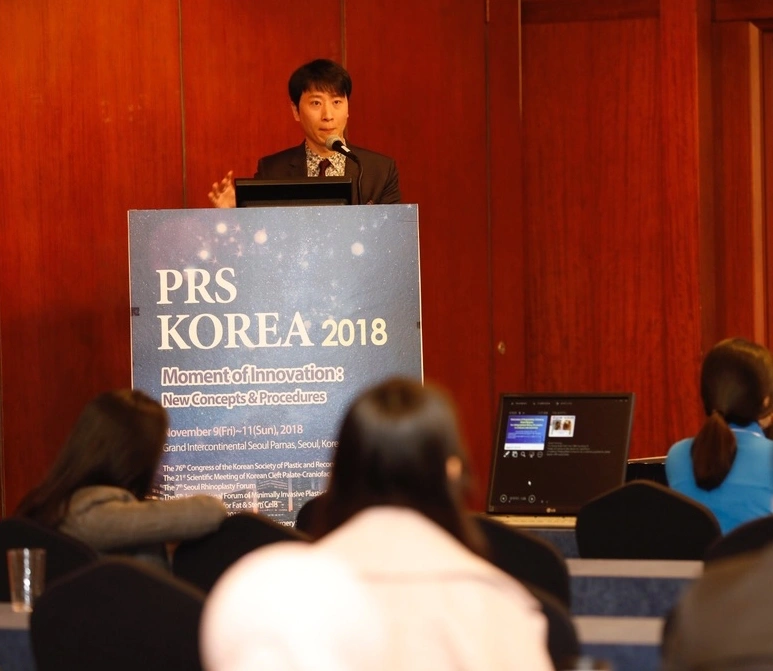
It is essential to choose a properly qualified surgeon for a successful facelifting operation. Seek out a cosmetic surgeon who holds board certification and boasts substantial experience in conducting face lift procedures, guaranteeing they possess specialized expertise and comply with elevated standards of practice.
The association with professional entities such as the Korean Society of Plastic Surgery and Reconstructive Surgeons signals an adherence by the surgeon to high practice norms. Confidence can be found when clinics are recognized through accreditation programs like the Korean Accreditation Program for Hospitals Serving Foreign Patients that verify compliance with safety protocols and quality criteria.
Advanced techniques like the deep plane facelift or SMAS facelift offer significant benefits, such as natural-looking results and effective lifting of deeper facial structures. A qualified surgeon can perform these procedures to address signs of aging and provide a semi-permanent solution for patients seeking rejuvenation.
Enlisting the services of an adept surgeon not only bolsters procedural security but also maximizes the chance for desirable aesthetic results, particularly regarding having excess skin removed—a critical consideration for those contemplating undergoing plastic surgery involving a face lift.
Evaluating Surgeon’s Results
Assessing the past work of a surgeon is crucial to grasp their artistic style and proficiency. By scrutinizing before-and-after photos of prior patients, one can acquire a deep understanding of the surgeon’s competence in executing face lifting surgeries, which aids in making educated choices regarding the operation.
Evaluating a surgeon's results should include their ability to address deeper facial tissues for significant rejuvenation. Reviewing the collection of a surgeon’s cases is instrumental in measuring their level of expertise and ascertaining whether their approach to surgical technique matches your expectations for results.
Incision Placement: Art and Anatomy for Sagging Skin
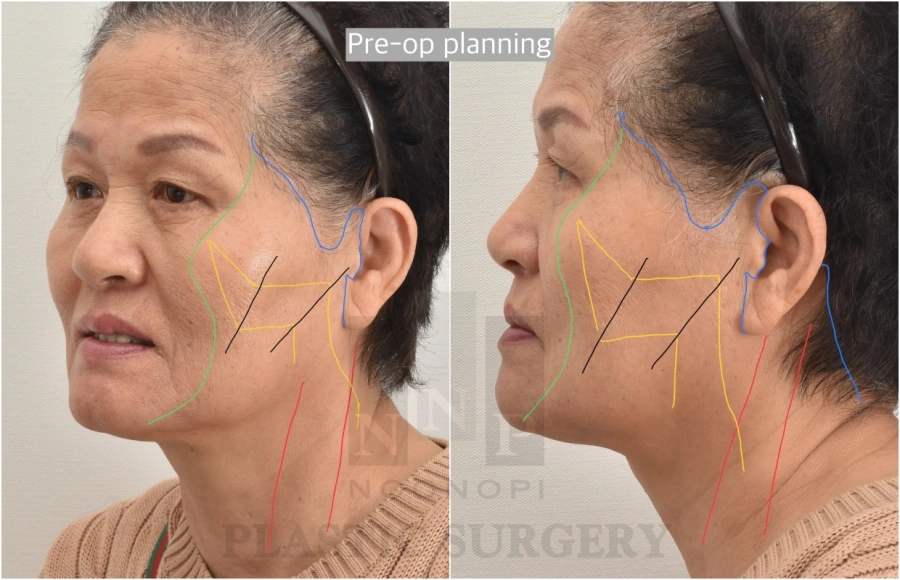
The placement of incisions in face lift surgery is a meticulous process that blends technical expertise with aesthetic judgment. For optimal results, it’s crucial for the surgeon to have extensive knowledge of facial anatomy, as this ensures incisions are made in a way that supports effective healing and delivers enduring enhancements while maintaining a natural look.
Effective incision placement allows surgeons to access deeper layers of facial skin and muscles for more stunning results.
In Noonopi facelifting, surgeons categorize the incision into three principal areas: around the temple region, directly in front of the ear, and extending behind the ear. This intentional segmentation permits targeted adjustments to be made on both superficial and deeper levels of facial tissues such as sagging skin layers, deep-set creases like nasolabial crease, and structures including muscles beneath the skin along with elements linked to conventional facelifts.
Achieving ideal positions for these cuts necessitates an equilibrium between precision craftsmanship and artistic insight. By judiciously choosing sites for making these incisions, surgeons can substantially reduce noticeable scarring post-surgery while ensuring that patients’ rejuvenated features blend seamlessly with their overall facial structure.
Temple Incision Placement
Temple incisions can be placed inside the hairline or along the hairline, each with its advantages and disadvantages. Incisions inside the hairline are well-hidden and maintain the natural facial contour, but may cause hairline recession. At Noonopi, Dr. Park prefers incisions along the hairline to preserve the sideburn, which requires high surgical precision to avoid visibility and ensure perfect alignment.
Tragus Region Incision Placement
Tragus region incisions are favored for providing better surgical access to mid-face structures while minimizing visible scarring. Incisions placed anterior to the tragus offer direct access to deeper tissues, making them preferred in male patients to avoid beard-bearing tragus. However, these incisions can result in more noticeable scars if not carefully placed and may disrupt the tragus contour. Korean facelift specialist Dr. Park prefers post-tragal incision, which conceals the scar in a better way.
Postauricular Incision Placement
Postauricular incisions effectively hide scars behind the ear, making them less visible in most patients. They can be placed along or inside the hairline, each with its considerations. Incisions along the hairline behind the ear minimize step-deformity of the hairline. However, they may be visible in short hairstyles in anearly stage of recovery. Incisions inside the hairline are hidden within the hair but has risk of hairline deformity, which Noonopi does not use this technique.
Combining Procedures for Enhanced Facial Rejuvenation
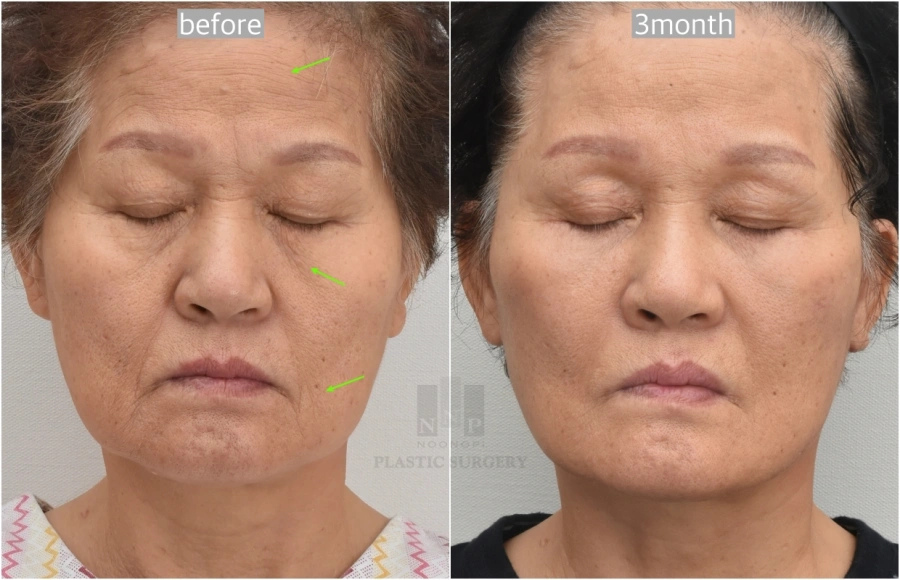
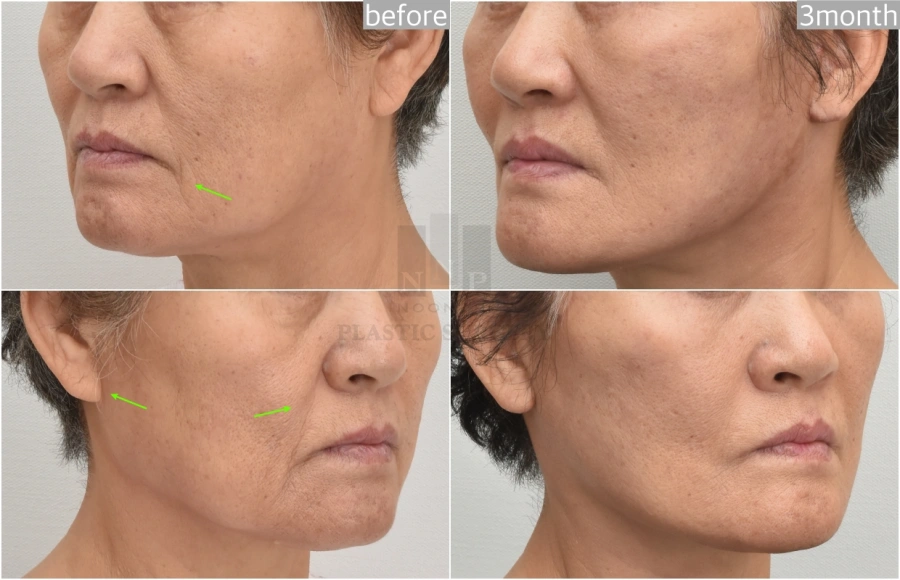
Incorporating various facial rejuvenation treatment, such as brow lifts, fat graft, and eyelid lifts, with standard rhytidectomy procedures can lead to a more harmonious and youthful appearance by addressing multiple signs of aging at once. This method enhances facial aesthetics through comprehensive facial rejuvenation, which includes traditional facelifts, other types of facial plastic surgery, and mini-facelift techniques.
Fat grafting can be a complementary procedure to enhance the results of facelifts by improving volume and longevity.
One substantial benefit of this combined approach is the convenience of undergoing a single recovery phase, making it particularly suitable for individuals with limited downtime. There are financial advantages due to decreased costs related to anesthesia as well.
Individuals who present indications of aging in both their upper and lower face while maintaining good overall health are excellent candidates for this combination strategy.
Facelifting Recovery
The recovery from rhytidectomy takes time. Due to the high risk of swelling, bruising, and skin sloughing, Noonopi recommends 4 to 6 sessions of hyperbaric oxygen therapy for facelift patients without additional cost!
In the initial phase, individuals can expect to encounter bruising and swelling that typically reach their peak between the third and fourth day following the procedure. Pain relief prescribed by a physician along with strict adherence to guidelines for recovering from a face lift can help manage these effects. Following specific recovery instructions, such as using a bandage around the face, can help minimize swelling.
During their recovery period, it’s common for patients to experience sensations of numbness or tightness. This is considered typical. They must refrain from any rigorous activities during the first three to five weeks after undergoing surgery in order to facilitate proper healing. By around 10 days post-surgery, many are able to go back to their regular daily routine.
It may take as long as 3~6 months to achieve complete recovery, where minor swelling and feelings of tightness might persist longer-term. Closely following your surgeon’s instructions regarding post-operative care plays an essential role in expediting the overall timeline for recovery while also maximizing outcomes related specifically to reducing swelling throughout this period.
Long-Term Results and Maintenance
Preserving the outcomes of a face lift requires diligent care for the facial skin, protection against UV rays, and possibly additional non-invasive treatments for any remaining skin to augment the lift. It’s vital to adhere to a healthy lifestyle that encompasses managing one’s weight and shielding skin from sun damage in order to extend the duration of these results. Establishing consistent skincare practices like mild cleansing and moisturizing is fundamental. Consuming foods high in antioxidants can bolster skin elasticity as well as collagen production, thus retaining a youthful appearance longer. Noninvasive skin tightening lasers may serve as an adjunctive method for boosting such effects.
While a face lift can achieve lasting results, the normal aging process continues and can impact the longevity of the surgical outcomes. Despite best efforts at maintenance, natural aging persists. Indications that a face lift’s impact might be waning could emerge as loose or re-sagging facial skin—a signal pointing towards possible need for revision due to changes in skin laxity, saggy excess folds of drooping tissue, along with other visible markers associated with growing older. The persistence of these enhanced aesthetics will vary depending on factors such as theindividual quality of dermal layers employed during surgery, combined with genetic inheritance influences.
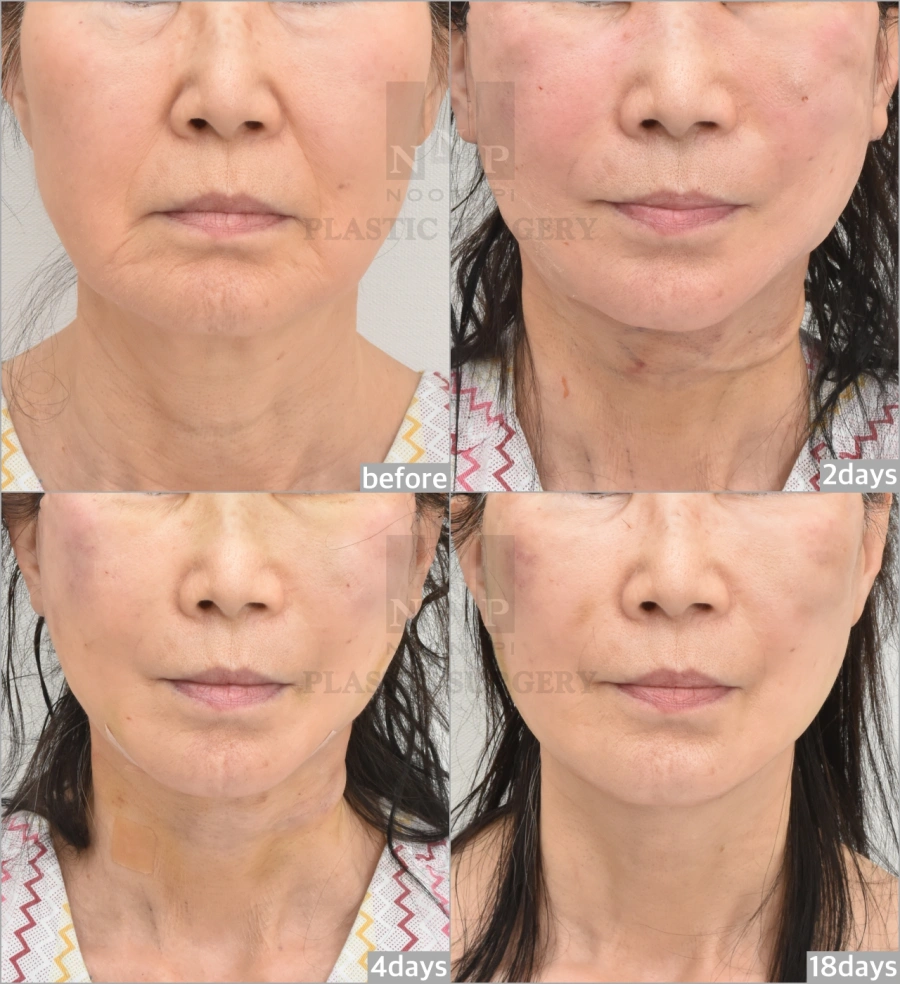
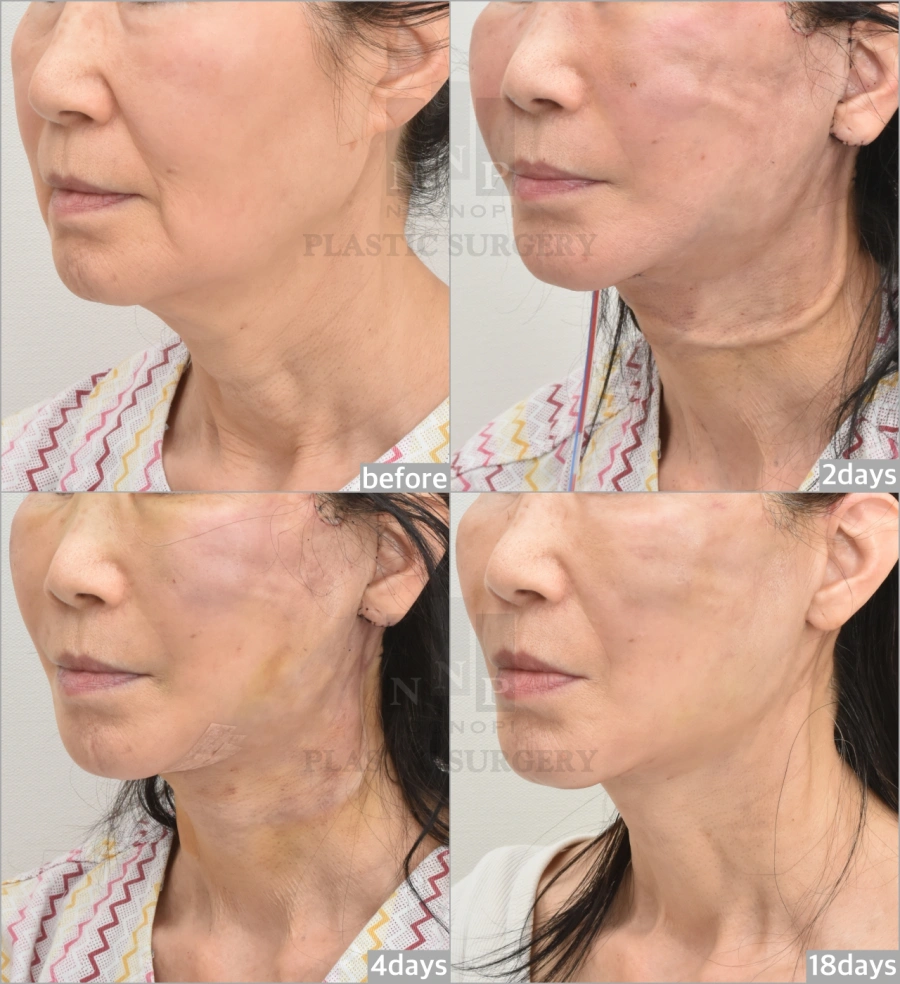
Facelift Cost in Noonopi
Noonopi is one of the most reputable and premium plastic surgery clinics in Seoul. At Noonopi Plastic Surgery, face and neck lift procedures are often performed together, as facial and neck aging typically occur simultaneously.
SMAS Facelift: $6,890 USD
Mini Facelift: $5,850 USD
Mini Neck Lift: $3,980 USD
Please note that these prices apply to first-time surgeries. Additional fees may apply for revision cases or for correcting conditions such as pixie ears. Anesthesia fees are not included either.
The above prices include 4 to 6 sessions of premium hyperbaric oxygen therapy (HBOT), wound care, and hair shampoo service. These prices apply to first-time surgeries. Additional fees may apply for revision cases or for correcting conditions such as pixie ears.
Summary
In summary, facelift surgery offers a powerful solution for those looking to rejuvenate their facial appearance. By choosing the right surgeon, understanding the importance of incision placement, and considering combined procedures, patients can achieve natural-looking and long-lasting results. Recovery and long-term maintenance are crucial aspects that can significantly influence the overall success of the surgery.
With the right knowledge and preparation, you can embark on your face lift journey with confidence, knowing that you have taken the necessary steps to ensure the best possible outcome.
Learn more about 🔗features of facial rejuvenation in Noonopi Plastic Surgery
Frequently Asked Questions
Why is it important to choose a board-certified surgeon for face lift surgery?
Choosing a surgeon who is board-certified for your facelift surgery is crucial, as it signifies that they have undergone specific training and maintain rigorous standards of practice, which greatly enhances both the safety aspect and the quality of surgical outcomes.
By choosing a board-certified expert for this procedure, you safeguard your health and increase the chances of achieving favorable results.
What are the benefits of combining face lift surgery with other procedures?
Opting for a combined approach in cosmetic surgery by pairing face lifts with procedures like brow lifts or eyelid surgeries can lead to more comprehensive rejuvenation. It also helps reduce the total recovery period and keeps costs lower. By adopting this strategy, patients can expect improved outcomes as it contributes to a balanced and aesthetically pleasing look overall.
How does incision placement affect the results of a face lift surgery?
Incision placement significantly impacts scar visibility, aesthetic results, and the longevity of a facelift. Properly positioned incisions can reduce visible scarring, promoting a more natural and youthful appearance.
What can I expect during the recovery process after a facelift surgery?
You can expect swelling, bruising, and sensations like numbness or tightness during the recovery process after face lift surgery. Face lift procedures specifically aim to address drooping skin to achieve more youthful and natural-looking results. Adhering to post-operative care instructions and avoiding strenuous activities are crucial for your healing.
How can I maintain the results of my face lift surgery?
To preserve the outcome of your face lift surgery, it is crucial to establish a regular skincare routine, shield your skin from the sun’s rays, and lead a healthy lifestyle. You may want to think about periodic non-surgical procedures as they can help augment and maintain the youthful look achieved through surgery.

